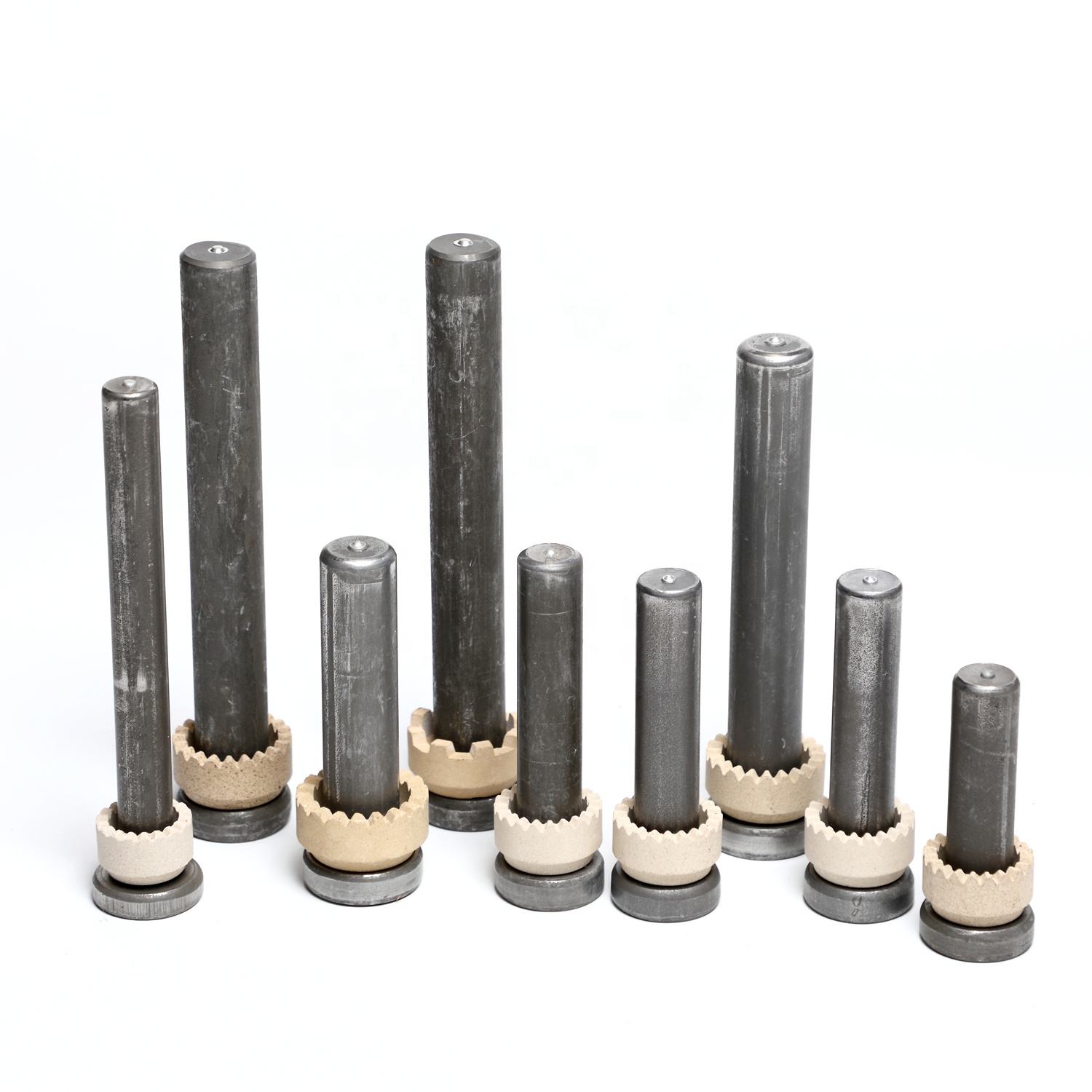

Understanding the Applications and Benefits of Metric Weld Studs in Modern Engineering Projects
Jul . 30, 2024 03:48 Back to list
Understanding the Applications and Benefits of Metric Weld Studs in Modern Engineering Projects
Understanding Metric Weld Studs Applications and Benefits
In the world of manufacturing and construction, the importance of reliable fastening methods cannot be overstated. One such method that has gained popularity across various industries is the use of metric weld studs. Understanding what these studs are, how they function, and their benefits can provide significant insights for engineers, project managers, and anyone involved in fabrication.
What Are Metric Weld Studs?
Metric weld studs are metal fasteners designed to be welded onto a surface to create a strong, permanent connection. Unlike traditional bolts and screws, which require a pre-drilled hole and a separate nut to secure the joint, weld studs are attached directly to the workpiece using a welding process, allowing for enhanced speed and efficiency in assembly.
Metric weld studs are available in various diameters and lengths, making them suitable for different applications and materials. They are typically made from robust materials like steel, stainless steel, or other alloys, ensuring they can withstand the rigors of industrial applications, including high-temperature and corrosive environments.
Applications of Metric Weld Studs
Metric weld studs are utilized in a variety of industries, including automotive, aerospace, construction, and electronics. In automotive manufacturing, for example, they are often used to attach components to chassis or frames during assembly, reducing the need for additional hardware and streamlining the manufacturing process.
metric weld studs

In the construction sector, weld studs are used to anchor structural elements, such as steel beams and concrete forms. This is particularly useful in high-rise buildings or industrial facilities where structural integrity is paramount. Additionally, in the electronics industry, weld studs can be found in the assembly of circuit boards, where they provide reliable grounding points.
Advantages of Using Metric Weld Studs
One of the primary advantages of metric weld studs is their ability to provide a strong bond without occupying excessive space. Because the studs are welded directly onto the surface, they create a flush connection that minimizes protrusion and can contribute to a sleeker design in finished products.
Furthermore, the welding process used to attach these studs enhances their durability. The joint created through welding is often stronger than the material itself, which means that the welded stud will outlast traditional mechanical fasteners. This durability translates to lower maintenance costs and reduced downtime for repairs, which are essential factors in industrial operations.
Another significant benefit is the speed of the assembly process. Welding studs can be quickly attached, which accelerates production timelines. In a competitive market, being able to produce items faster can have a considerable impact on a company's bottom line.
Conclusion
In summary, metric weld studs are an essential component in modern manufacturing and construction. Their unique design and application allow for strong, permanent connections that enhance the durability and efficiency of assemblies. As industries continue to evolve and demand for reliable fastening methods increases, the use of metric weld studs is likely to grow, making them an integral part of the production process. For engineers and manufacturers looking to streamline operations while maintaining high standards of quality, metric weld studs represent a practical solution that meets both current and future needs.
Latest news
-
Hot Dip Galvanized Bolts-About LongZe|High Strength, Corrosion Resistance
NewsJul.30,2025
-
High-Strength Hot Dip Galvanized Bolts - Hebei Longze | Corrosion Resistance, Customization
NewsJul.30,2025
-
Hot Dip Galvanized Bolts-Hebei Longze|Corrosion Resistance&High Strength
NewsJul.30,2025
-
High-Strength Hot-Dip Galvanized Bolts-Hebei Longze|Corrosion Resistance&High Strength
NewsJul.30,2025
-
Hot Dip Galvanized Bolts-Hebei Longze|Corrosion Resistance&High Strength
NewsJul.30,2025
-
Hot Dip Galvanized Bolts - Hebei Longze | Corrosion Resistance, High Strength
NewsJul.30,2025

